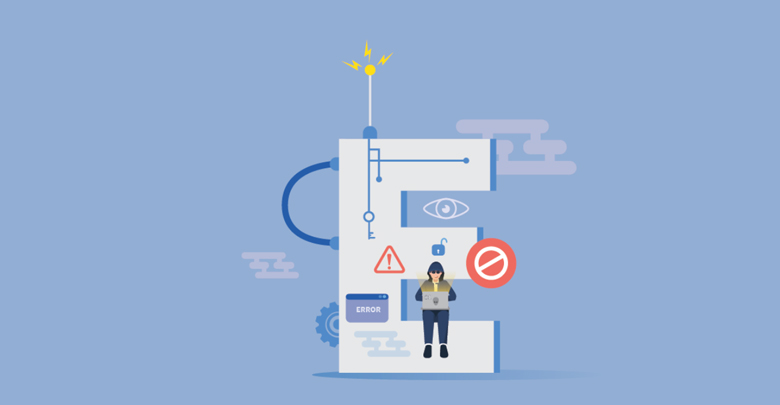What is NetScan and How to fix this problem?
Businesses (both large and small) need an internal network to increase the speed and quality of tasks such as keeping and sharing information. Netscan or network scanning is a solution that some hackers use to identify the desired Network. As the saying goes, if you know your enemy, you are halfway to success. If you are looking for a way to prevent such problems from occurring in your Network and increase its security, you are in the right place.
In this article, we examine NetScan from the aspect of hacking and unauthorized access, and the goal is to make your Network or server more secure by learning more about NetScan and ways to fix it. Stay tuned for more:
What is Netscan?

NetScan is a popular method to discover network vulnerabilities, such as open ports. If done by the network administrator, this is a security measure, but if done by hackers, it is considered an attack and a way for unauthorized penetration into the systems. It also makes the servers smoother.
Netscan or NetScan refers to a process that results in comprehensive information about network details. This type of scan is usually used for security assessments and system maintenance. However, obtaining information about the Network attracts hackers’ attention. Implementing various attacks to access information, unauthorized use of services, etc., are among the goals achieved by fully understanding the Network and its vulnerabilities.
A hacker needs the tools and protocols that network monitoring and management systems rely on to obtain public IP addresses, information about servers, ports, and other devices, and discover vulnerabilities.
Hackers can easily draw a network map using Nmap to identify the open ports of devices, services, running processes, and network vulnerabilities. Hackers’ access to the details of the Network and its vulnerabilities means discovering holes, and penetrating the Network through these holes is a great threat to the system and sensitive information.
NetScan objectives
- Identification of UDP and TCP network services available on the desired hosts
- Identification of filtering systems between the user and the desired hosts
- Determining the operating systems used by evaluating IP responses
- Detect attacks and protect the Network against them
- Determining the overall state of the Network in terms of vulnerability and security
- …
Types of Netscan

The netscan process has two other sub-branches, which we will examine in the following:
NetScan
This scan is a basic and important method of determining the location and number of active systems. By scanning the Network, the hacker obtains a logical plan of the Network and a basic road map.
In the first step, the footprint step, data such as the organization’s DNS, email servers, and IP address ranges are identified.
During the scanning phase, the hacker discovers details about the identified IP addresses, architecture, operating systems, and services running on each system.
Other data, such as routing tables, usernames, network groups, and Simple Network Management Protocol (SNMP) data, are collected during the Network’s enumeration phase.
Port Scanning
As the name suggests, port scanning is a process used to find active ports on a network. A port scanner forwards client requests to a range of target network ports and then stores details about the ports that send responses.
This type of Scanning is deeper than NetScan and clearly shows details. For example, it shows that a system with IP address 10.10.10.10 is up and running, and port 80 (a popular port for HTTP traffic) is open. So this device is a web server, and a hacker can use this information to plan the next stage of their hack.
Finding open holes among the 65,535 ports of each IP address provides the necessary opportunities for a robust and successful attack.
Of course, this sub-branch of netscan itself has different types, the most used of which are:
- TCP scanning
- SYN scanning
- UDP scanning
- ACK scanning
- Window scanning
- FIN scanning
Vulnerability scanning
Vulnerability scanners go a step beyond port scanning and identify open ports, operating systems, and the vulnerabilities the host is facing.
For example, if a port scanner shows that the host is running Windows 7 and a certain service, a vulnerability scanner will also detect vulnerabilities caused by exploits.
These vulnerabilities discovered by Nmap result from poor programming and misconfiguration of the Network.
Among the types of vulnerable scanners, the following can be mentioned:
Network Enumerator – A computer program used to gather information about network users and groups of systems.
Network Vulnerability Scanner – a system that continuously scans network vulnerabilities.
Web Application Security Scanner – a program that communicates with a web application and identifies possible vulnerabilities of the application or its architecture.
A computer Worm is a type of malware used to detect vulnerabilities.
How to prevent hackers from running a NetScan

Hackers use NetScan tools to search the network and discover organizations’ security levels. By identifying vulnerabilities, they can successfully and effectively attack. To remove these threats from your Network, you must have up-to-date and practical information on Netscan.
The Network needs powerful security software, port scanning tools, and alerts. Netcat and Nmap are useful tools for increasing security levels by identifying vulnerabilities.
The most widely used network defense mechanisms against unauthorized NetScan
Use a strong firewall.
A firewall can prevent unauthorized access to a business’s private Network. Firewalls can detect ports and their status, and detect and turn off any running scans.
Most quality routers have a built-in firewall, but installing a software firewall on devices connected to the Internet is recommended. These types of firewalls identify external threats and prevent any risk of attacking high-risk ports. This makes the Network less vulnerable to the netscan problem caused by hackers.
TCP wrappers
TCP wrappers allow administrators more flexibility to allow or block unauthorized access. Admins do this based on IP addresses and domain names.
Discovering holes in the Network
Identify open ports, network status, and system vulnerabilities by performing the necessary scans before the hacker comes into action with the netscan attack.
Periodic Scanning of the Network helps to discover its weak points. Suppose you can identify vulnerable applications, open and vulnerable ports, poor programming, incorrect network configuration, etc., before the hacker. In that case, you will block the way for any attack by a network scanner.
Some other solutions:
- Checking the files on the server and identifying suspicious and malicious files
- Using tools like CXS and Maldet to prevent malicious file uploads
- Using tools like Hardening to close open ports and unnecessary services
- Properly setting up the server and updating services to increase network security
Conclusion
Netscan is considered a problem when hackers do it and provides them with information about active devices, open ports, running services, and network vulnerabilities. If you can prevent such problems by implementing security solutions, the risk of hacker attacks will surely be much less.
The use of a virtual server also requires the implementation of special security measures because every Network or system is at risk of this type of attack. The important thing is that by outrunning hackers and eliminating network vulnerabilities before them, you can have the power of a combined high processing of your virtual server with high security. In this way, you can move forward with strength and have no fear of such problems.
Thank you for staying with us until the end of the article. We hope that reading this article was helpful for you. If you have any questions or requests and need guidance, you can contact us by registering your opinion so we can answer you as soon as possible.

